When it comes to exotic pets, reptiles offer some of the most fascinating and unusual companions available to enthusiasts. Beyond the common bearded dragons and ball pythons lies a world of extraordinary scaly friends that can legally become part of your household. These distinctive creatures bring color, unique behaviors, and conversation-starting qualities to the homes of dedicated reptile keepers. Let’s explore some of the most exceptional reptile species that you can legally keep as pets in most jurisdictions, along with insights into their care requirements and special characteristics.
Blue-Tongued Skinks
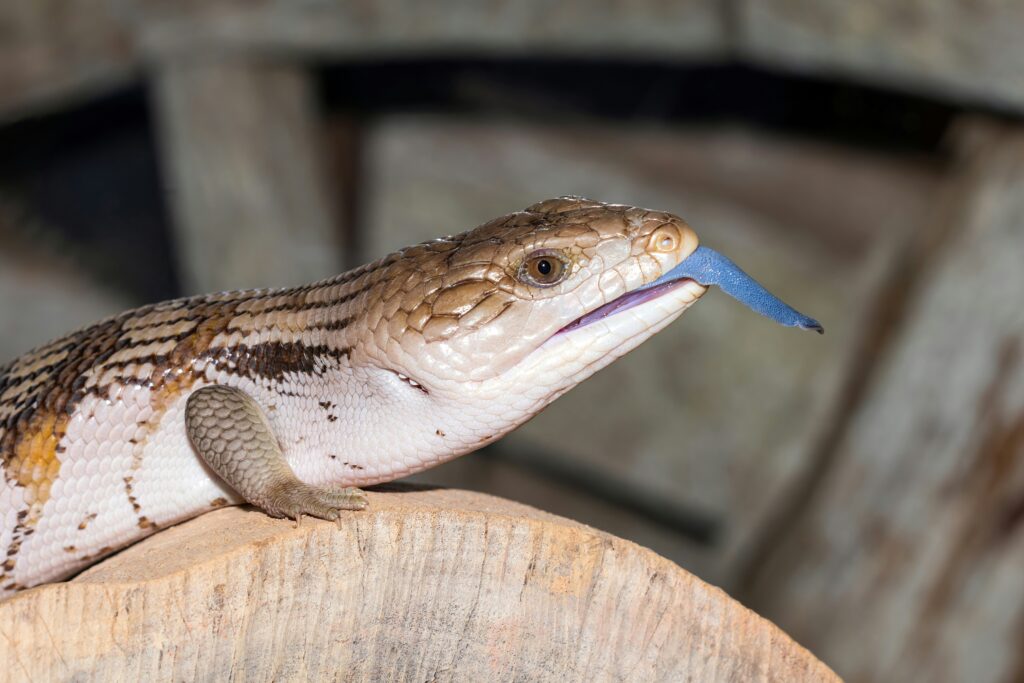
Blue-tongued skinks stand out in the reptile world with their namesake vibrant blue tongues, which they display when threatened as a defense mechanism. These medium-sized lizards, native to Australia and parts of Indonesia, possess docile temperaments that make them excellent pets for both beginners and experienced keepers. Their omnivorous diet consists of vegetables, fruits, and protein sources like insects or high-quality dog food, making their nutrition relatively straightforward compared to other reptiles. With proper care, these personable lizards can live 15-20 years in captivity, forming recognizable bonds with their keepers and even responding to their presence with apparent enthusiasm.
Crested Geckos
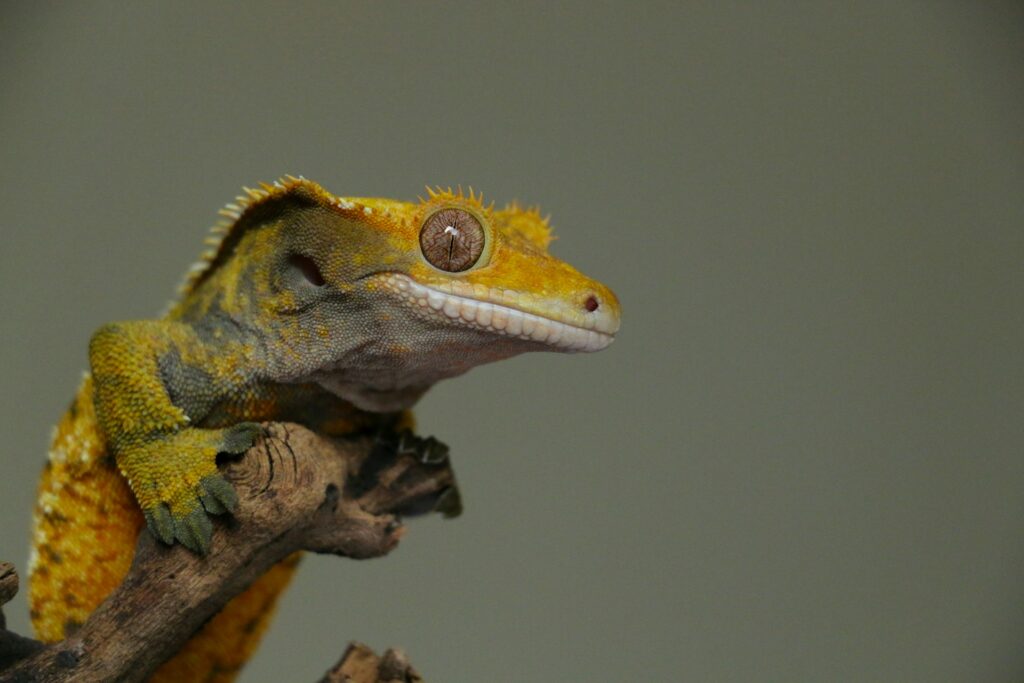
Crested geckos have soared in popularity since their rediscovery in 1994 after being thought extinct. These arboreal lizards sport distinctive ridge-like “crests” that run from their eyes to their tail, giving them an almost prehistoric appearance. What makes them particularly appealing as pets is their relatively simple care requirements – they thrive at room temperature, can be fed commercially available powder-based diets, and don’t require UVB lighting like many other reptiles. Their ability to change color slightly based on mood, temperature, and time of day provides an ever-changing visual display for owners. Additionally, their vertical climbing habits and jumping abilities make them fascinating to observe in a properly set-up terrarium with plenty of branches and plants.
Uromastyx Lizards
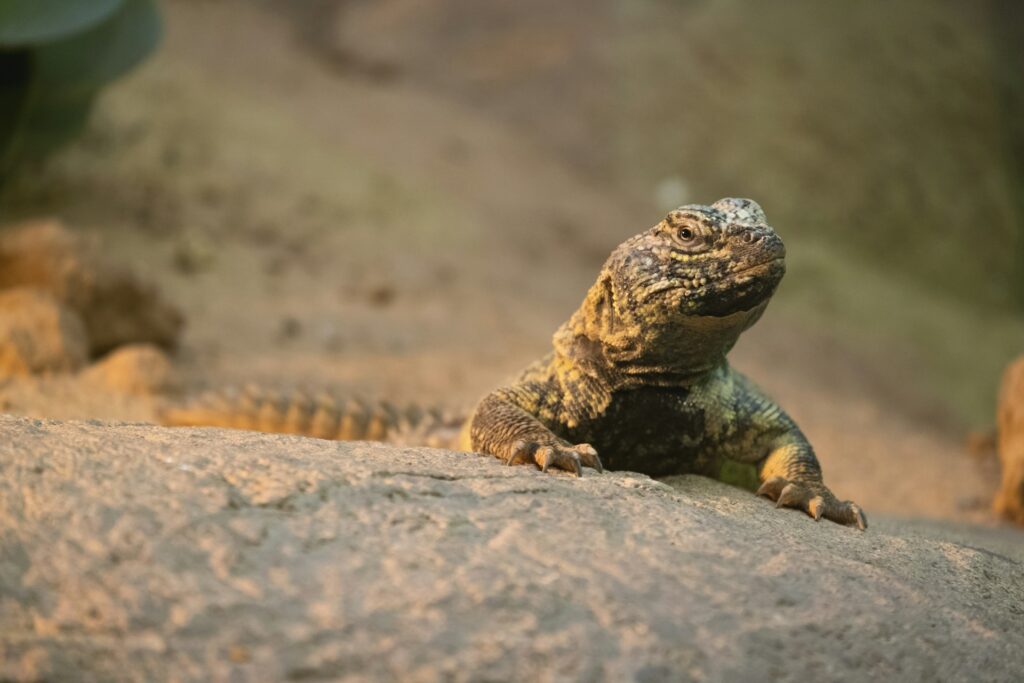
Often called spiny-tailed lizards, Uromastyx species offer reptile enthusiasts vivid coloration unlike almost any other legal pet reptile. These desert-dwelling lizards can display stunning combinations of blues, reds, greens, and yellows, especially when kept in optimal conditions with appropriate UVB exposure. What makes them particularly unique is their almost entirely herbivorous diet in adulthood, consisting primarily of greens and vegetables with occasional seeds and beans, simplifying feeding routines compared to insect-dependent species. Their specialized spiny tails, which they can use defensively by swinging them at threats, make them distinctive within the reptile pet trade. Uromastyx also employ an interesting thermoregulation behavior where they bask with their bellies flattened against hot surfaces, then retreat to burrows, allowing them to maintain optimal body temperatures in harsh desert environments.
Leopard Geckos
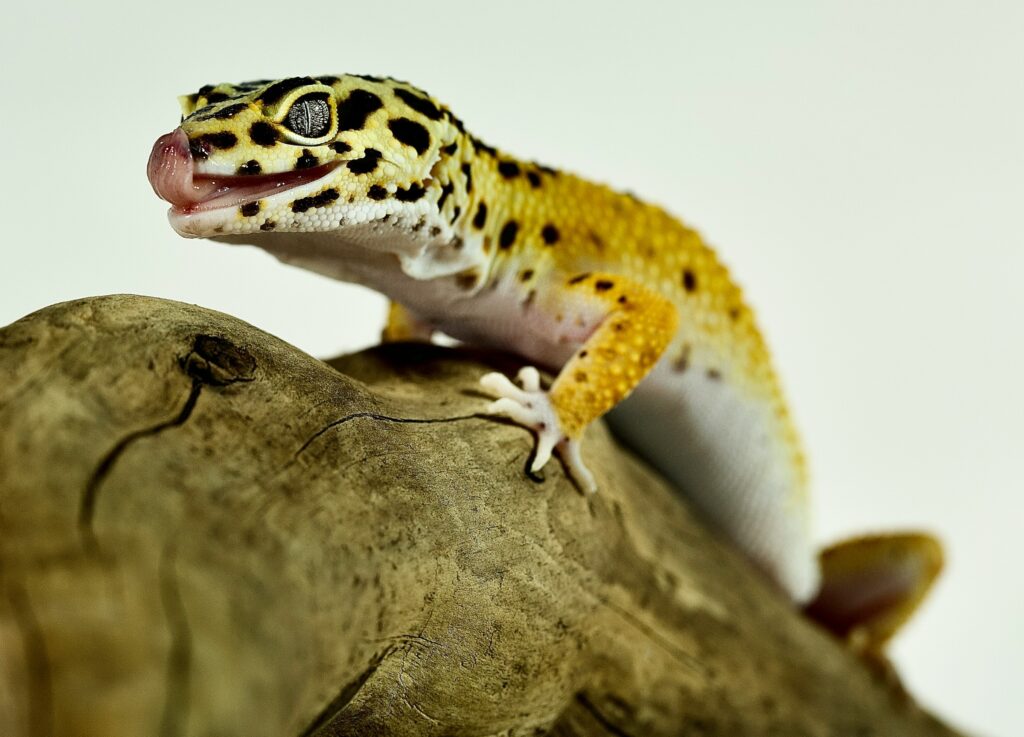
Leopard geckos may seem commonplace in the reptile trade, but their morphs and variations make them among the most unique reptiles legally available as pets. Selective breeding has produced extraordinary variations, including albinos, “blizzards,” and the coveted black night and super galaxy morphs that bear little resemblance to their wild-type ancestors. Unlike most geckos, leopard geckos possess movable eyelids, allowing them to blink and sleep with closed eyes, which gives them a more expressive appearance than many other reptiles. Their tail-wiggling hunting behavior, where they focus intently on prey while vibrating their tail tip, displays their natural instincts and provides entertainment for owners during feeding time. Additionally, their remarkable ability to drop and regenerate their tails has evolved beyond a simple defense mechanism, as their tails also store fat reserves for times when food might be scarce.
Chinese Water Dragons
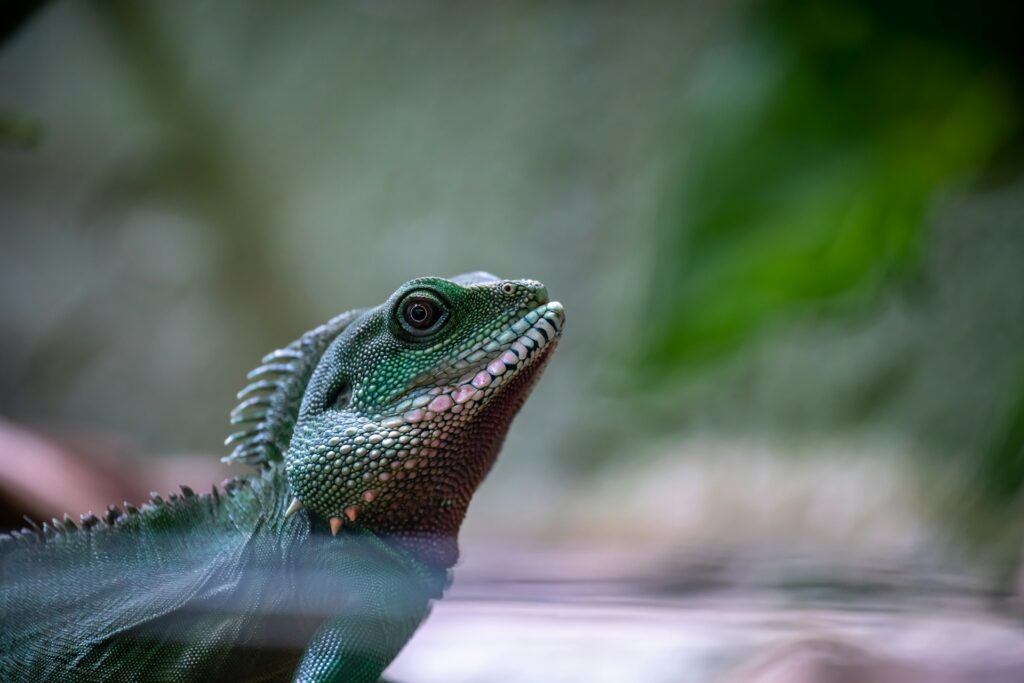
Chinese water dragons represent one of the most active and intelligent reptiles in the pet trade, with problem-solving abilities that surprise many new owners. These emerald-green arboreal lizards possess a distinctive sail-like crest along their backs and tails, giving them a prehistoric, dragon-like appearance that matches their name. What makes them truly unique is their semi-aquatic lifestyle – they’re excellent swimmers who will readily dive into water features to escape perceived threats, hunt for food, or simply cool off during hot weather. Chinese water dragons have demonstrated the ability to recognize their owners, responding differently to familiar people versus strangers, suggesting a level of social cognition not commonly associated with reptiles. Their care requirements are more demanding than those of some other species, requiring large enclosures with both climbing structures and swimming areas, but their engaging behaviors reward dedicated keepers.
Argentine Black and White Tegus
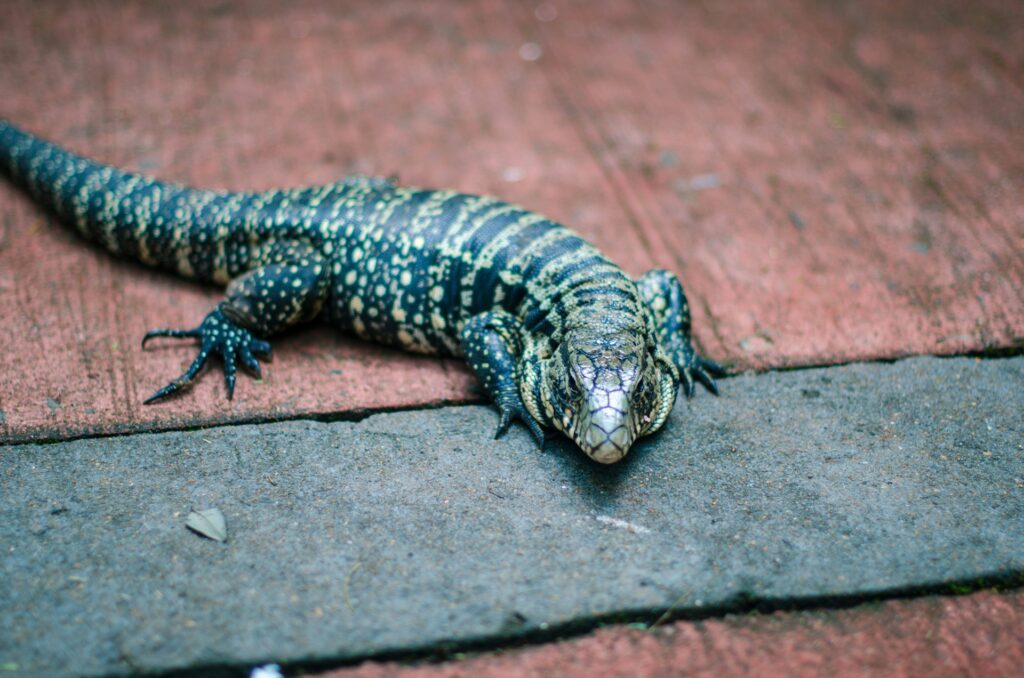
Argentine tegus have earned a reputation as the “dogs of the reptile world” due to their remarkable intelligence and capacity for bonding with their keepers. These large South American lizards can recognize individual humans, respond to their names, and even seek out physical interaction and handling from trusted caretakers, behaviors rarely seen in reptiles. Their omnivorous diet requires considerable variety, including fruits, vegetables, insects, and appropriate protein sources, making meal planning more involved but also more engaging for owners who enjoy providing enrichment. Tegus possess impressive problem-solving abilities, learning how to open simple latches and containers when motivated by food rewards. Their size and care requirements make them suitable only for committed keepers with appropriate space, but those who provide proper environments are rewarded with one of the most interactive and personable reptilian companions available.
Red-Eyed Crocodile Skinks

Red-eyed crocodile skinks might be the closest thing to owning a miniature dragon, with their prehistoric appearance featuring ridged backs, spike-like protrusions, and vibrant red-orange eye rings that contrast dramatically with their dark bodies. Despite their formidable appearance, these small lizards from New Guinea rarely exceed 8-10 inches in length, making them suitable for keepers with limited space. What truly sets them apart from other pet reptiles is their unusual vocalization ability – when stressed or during mating, they can emit squeaking sounds, a rare trait among lizards. These secretive creatures also demonstrate complex parental care in captivity, with females guarding their eggs and some reports of continued protection of hatchlings, behaviors uncommon among reptiles typically available in the pet trade.
Madagascar Day Geckos
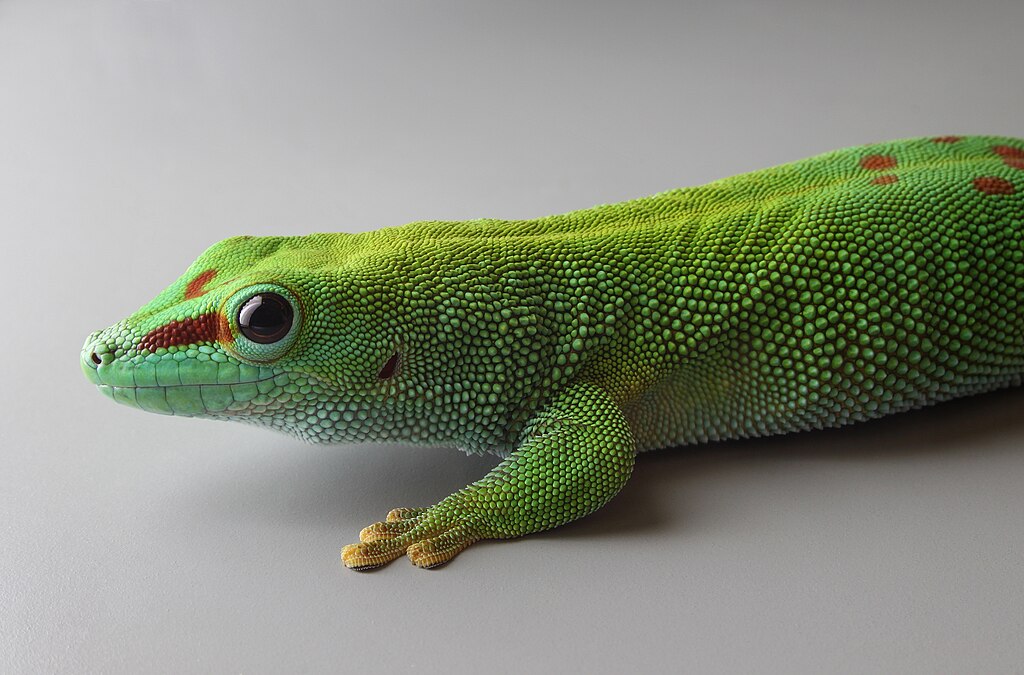
Madagascar day geckos stand out not only for their brilliant emerald green coloration accented with vibrant red dots, but also for their diurnal nature that allows owners to observe their activities during normal waking hours. Unlike many nocturnal gecko species, these active lizards display their full range of behaviors during daylight, including complex social interactions when kept in appropriate pairs or groups. These geckos have specialized toe pads with microscopic spatula-shaped structures that allow them to scale virtually any surface, including glass, and can even walk across ceilings with ease. Their care includes some unique aspects, including their ability to consume nectar and fruit purees, which can be offered on leaves or specialized feeding ledges where they’ll lap up the food with their specialized tongues.
African Fat-Tailed Geckos
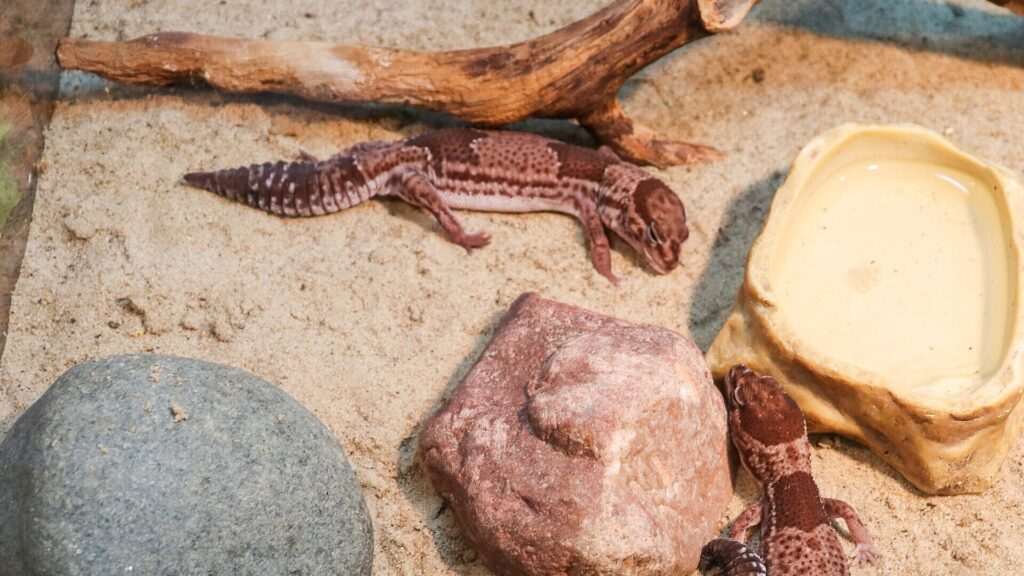
African fat-tailed geckos offer a fascinating alternative to the more common leopard gecko, with distinctive traits that set them apart despite their similar appearance. Native to the humid regions of West Africa, these geckos possess naturally more docile temperaments than many other species, rarely displaying defensive behaviors even when first handled. Their namesake fat-storage tail is typically shorter and thicker than leopard geckos’, and features distinctive banding patterns that vary between regional variants and morphs. What makes them particularly unique is their specialized adaptation to their native humid environment – they have a small “window” on their lower eyelids that allows them to see even when their eyes are closed to protect against soil and debris. Additionally, their natural habitat has led to specialized care requirements involving higher humidity levels than many other terrestrial geckos, creating an interesting bioactive terrarium challenge for dedicated keepers.
Abronia Lizards (Arboreal Alligator Lizards)

Abronia lizards, often called arboreal alligator lizards, represent some of the most visually striking yet uncommon reptiles legally available in the pet trade. These Central American montane lizards display extraordinary coloration ranging from emerald greens to turquoise blues, complemented by spiny scales that give them a distinctive dragon-like appearance. What makes them truly special is their specialized ecological niche – they inhabit high-altitude cloud forests, requiring very specific temperature and humidity gradients that challenge even experienced keepers to recreate. Unlike many reptiles, Abronia species are known for their parental care behaviors, with females guarding eggs and, in some cases, remaining with their young after hatching. Their care represents the cutting edge of herpetoculture, with successful breeding programs helping reduce wild collection of these increasingly rare lizards.
Solomon Island Skinks (Prehensile-Tailed Skinks)
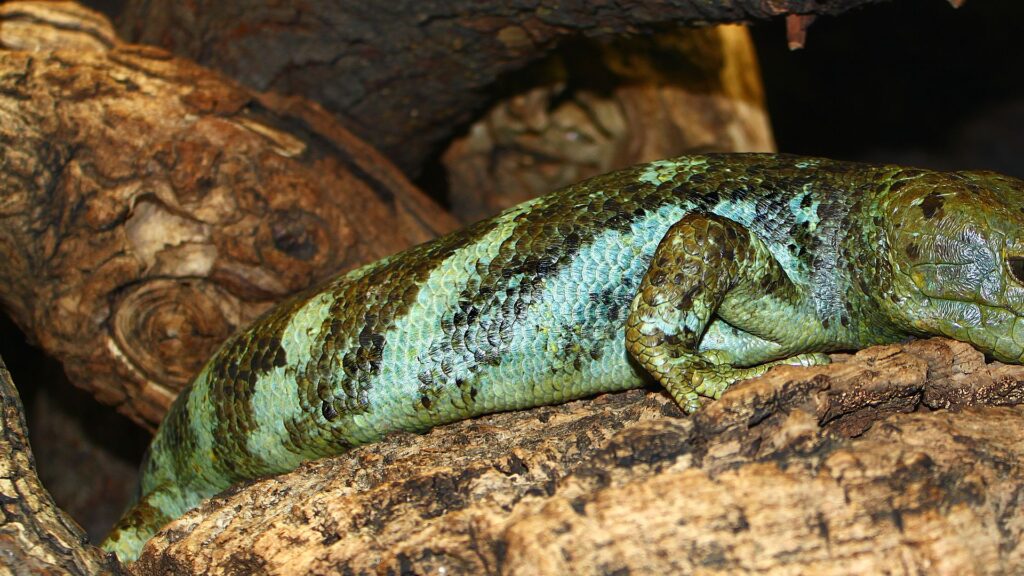
Solomon Island skinks, also known as prehensile-tailed skinks or “monkey-tailed skinks,” offer perhaps the most unusual reptilian pet experience legally available. These massive arboreal skinks can reach lengths of up to 28 inches, making them among the largest skinks in the world and an impressive display animal. Their most distinctive feature is their strong prehensile tail, which functions like an extra limb, allowing them to hang securely from branches while gathering food or navigating their treetop habitat. Unlike most reptiles, these skinks are herbivorous as adults, specializing in consuming leaves, flowers, and fruits, and they’re one of the few reptiles that regularly consume significant amounts of leaf matter. Perhaps most remarkably, they are one of the few truly social reptiles, living in family groups in the wild, and they give birth to live young (usually one at a time) that are proportionally enormous – nearly one-third the size of the mother.
Gargoyle Geckos
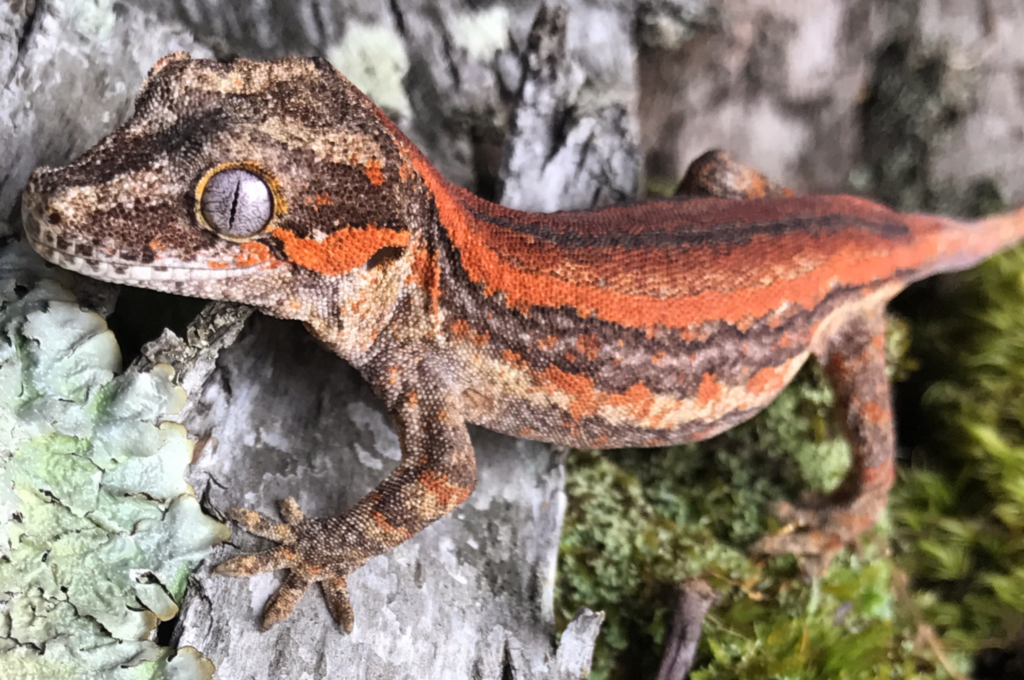
Gargoyle geckos derive their name from the distinctive ridges over their eyes that give them a somewhat mythical, gargoyle-like appearance. These New Caledonian geckos offer tremendous color and pattern variation, from subtle earthy tones with mottled patterns to striking red, orange, or white specimens with contrasting markings. What makes them particularly appealing as unique pet reptiles is their combination of manageable care requirements similar to crested geckos, but with a more terrestrial nature that makes their behavior patterns distinctly different. Unlike many geckos that drop their tails as a defense mechanism with no regeneration, gargoyle geckos can completely regrow their tails if lost, often with nearly identical appearance to the original. Their voracious appetites and animated feeding responses make mealtime particularly entertaining, as they’ll enthusiastically pursue insects with remarkable accuracy and speed.
Important Considerations for Exotic Reptile Keeping
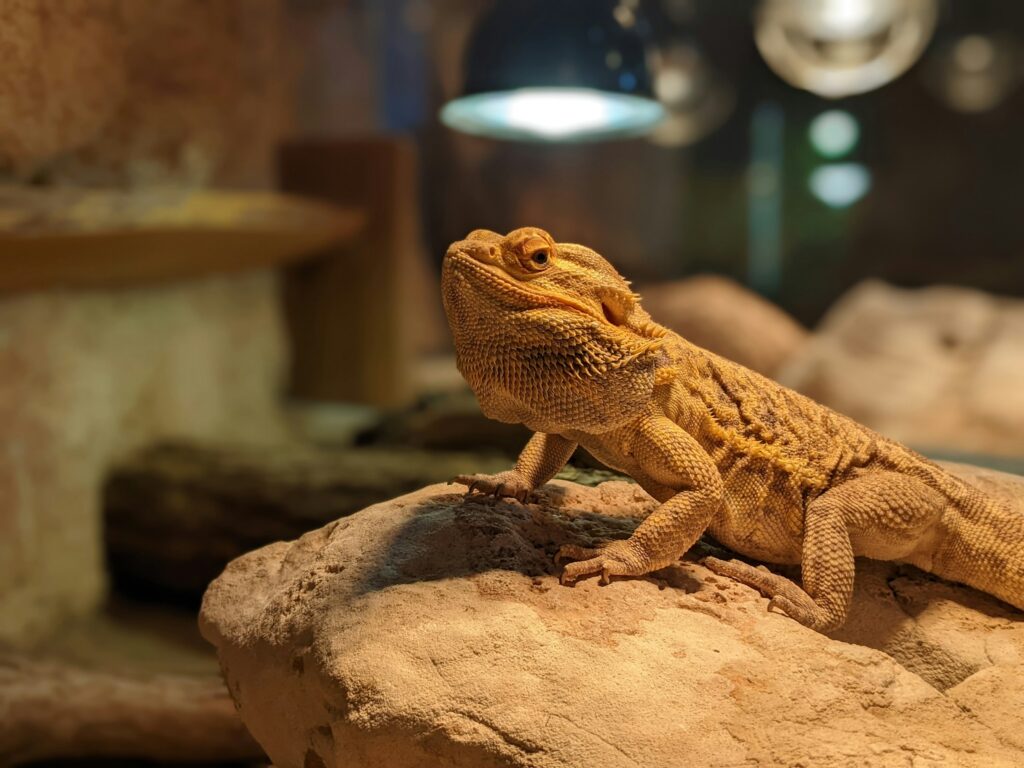
Before acquiring any unique reptile species, prospective owners must thoroughly research local laws, as regulations regarding exotic pet ownership vary dramatically between countries, states, and even municipalities. Responsible ownership includes preparing appropriate enclosures before bringing home any animal, with particular attention to specialized requirements like UVB lighting, temperature gradients, humidity levels, and dietary needs specific to each species. Ethical sourcing represents another crucial consideration, with captive-bred specimens strongly preferred over wild-caught individuals, which often carry higher parasite loads, adapt poorly to captivity, and may contribute to population declines in their native habitats. Additionally, potential owners should realistically assess the long-term commitment these animals represent, as many species mentioned can live 15-20+ years with proper care, requiring sustained financial investment in appropriate housing, food, veterinary care, and environmental controls.
Conclusion
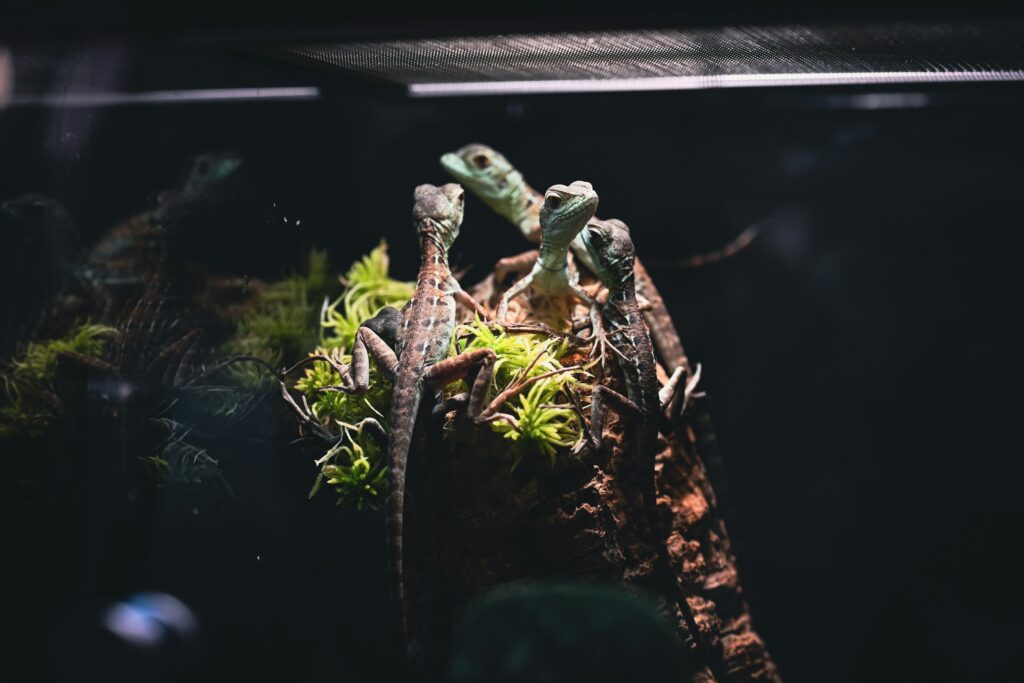
The world of legally available pet reptiles extends far beyond the common species found in chain pet stores. These unique reptilian companions offer dedicated keepers the chance to observe fascinating behaviors, brilliant colors, and distinctive adaptations that have evolved over millions of years. While these specialized pets aren’t suitable for everyone, those willing to invest the time, research, and resources into their proper care can develop rewarding relationships with some of nature’s most extraordinary creatures. As with any exotic pet, responsible ownership begins with thorough research, ethical sourcing, and a lifetime commitment to meeting the specific needs of these remarkable animals.

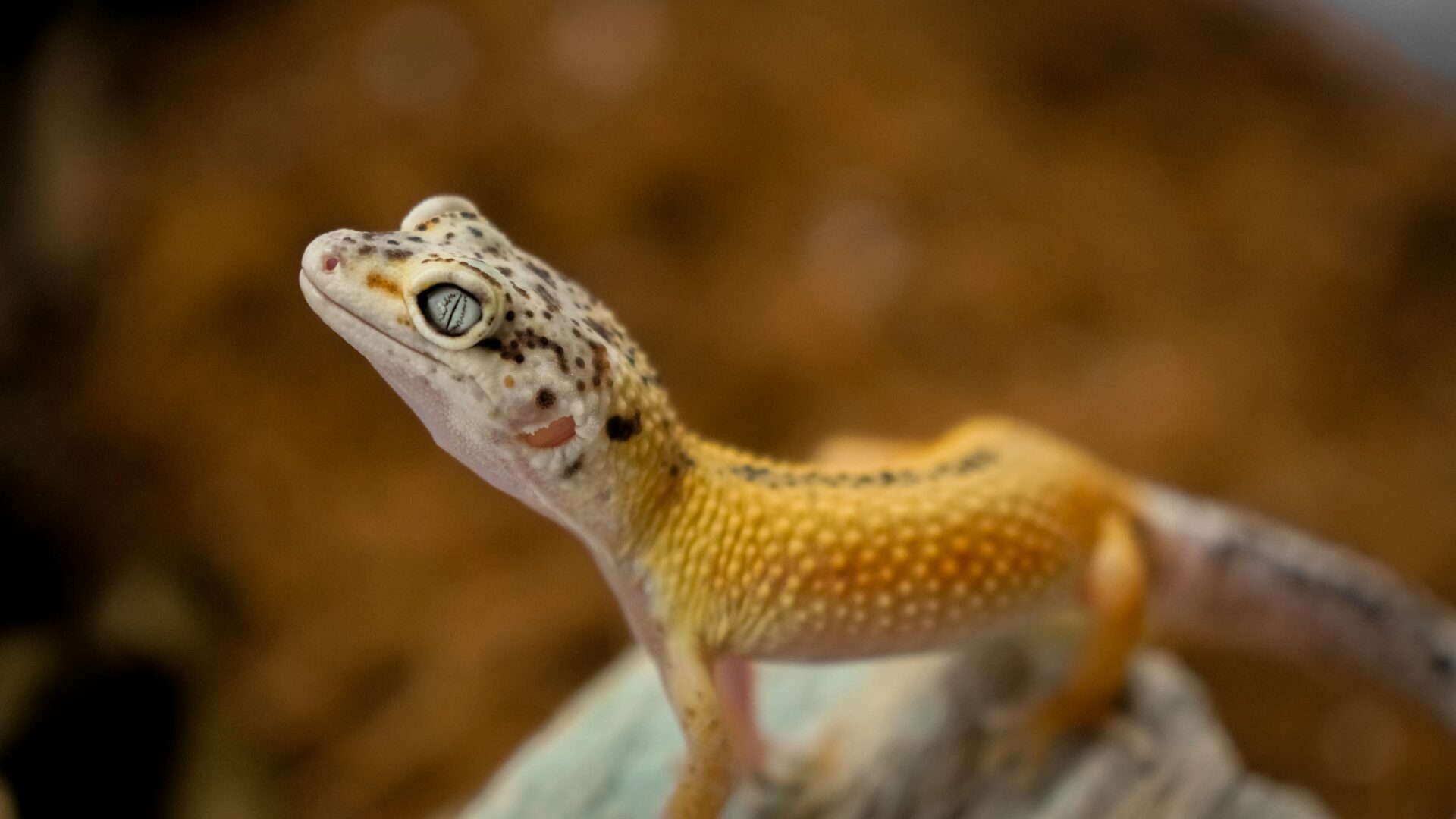







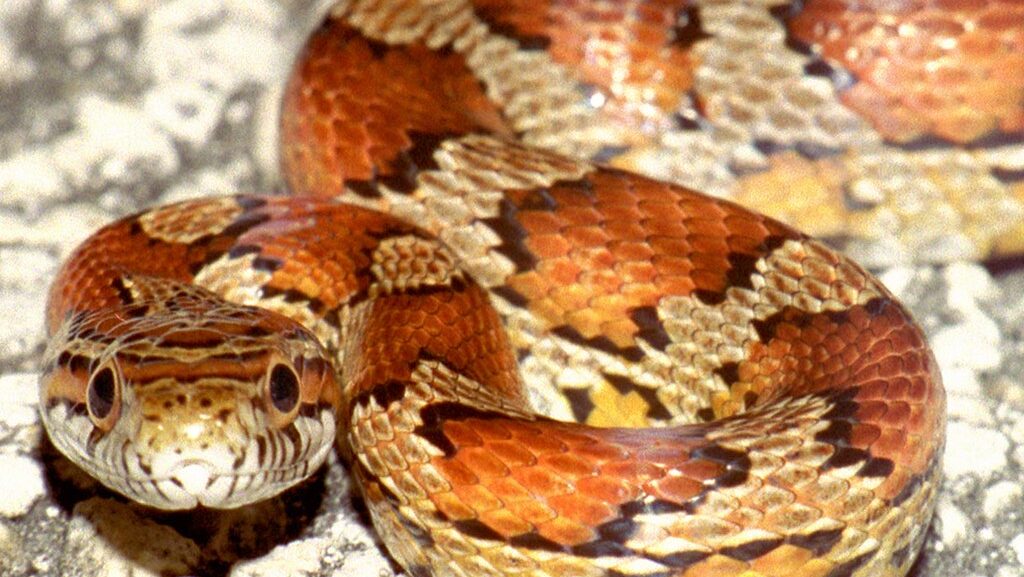
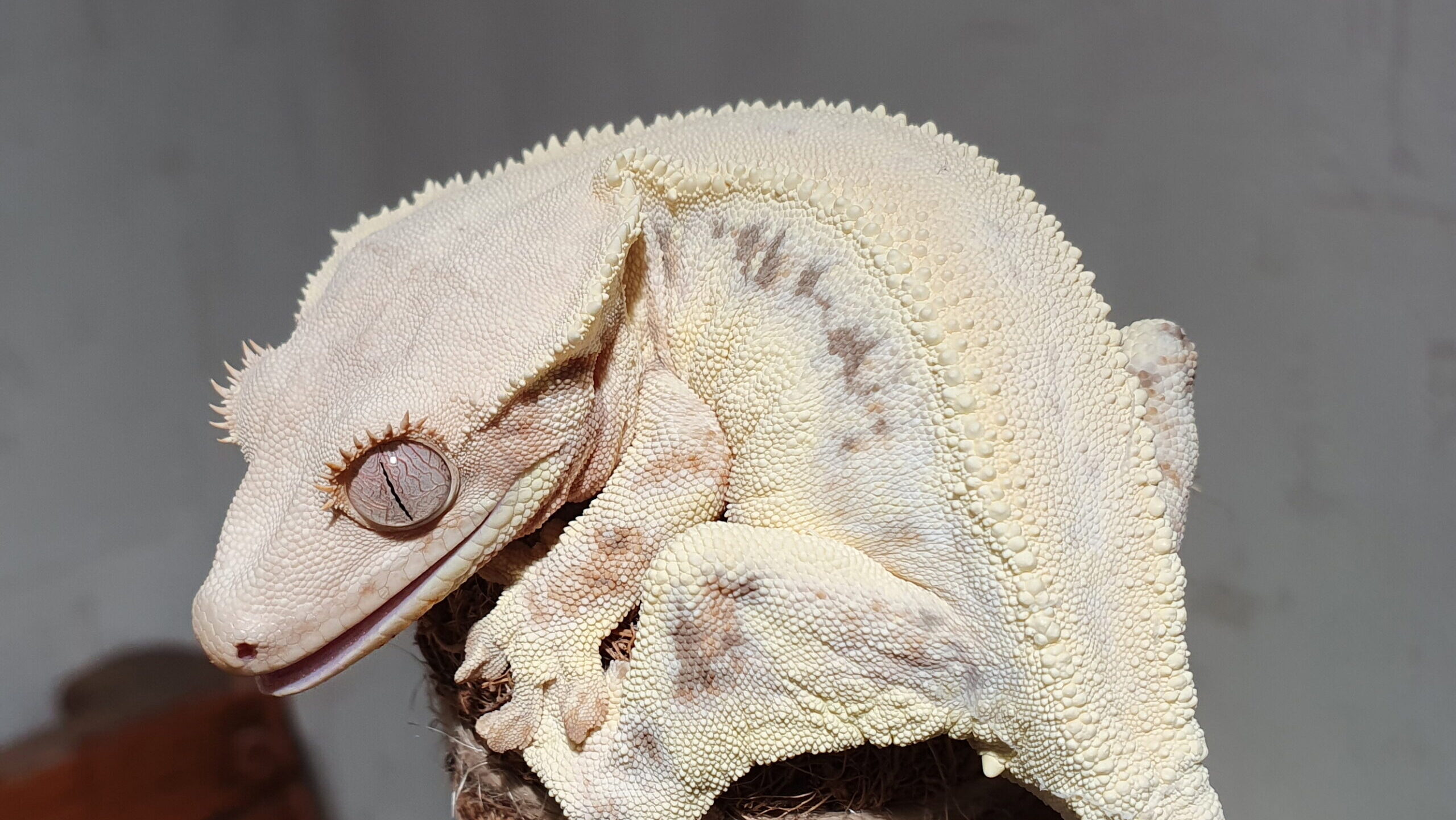





Leave a Reply